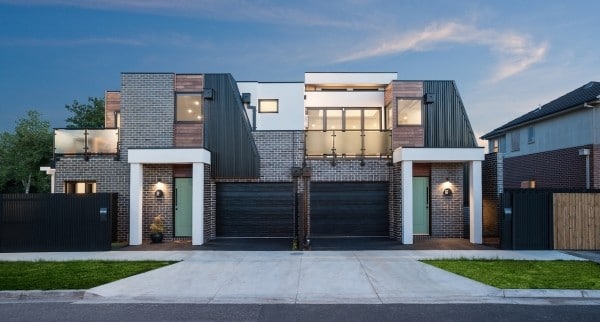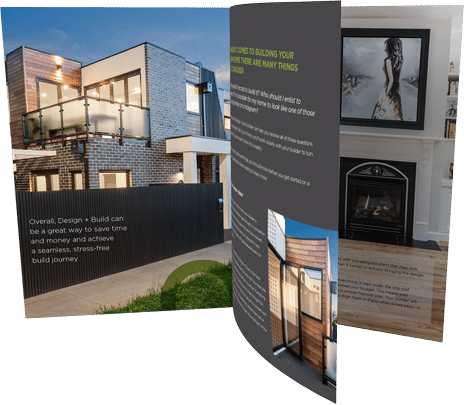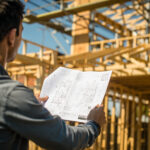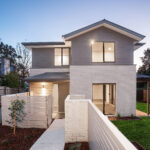Get the best look for your new home
It’s hard not to have an emotionally positive response the first time you see a beautifully designed and well-constructed home from the street.
When it happens, a number of elements are working together. From the aspect, frontage and orientation of the block, to the details of landscaping through to the proportion and aesthetic of the dwelling itself.
While all these play their part, in most cases it’s the external finish of the home that dominates the picture.
This is why cladding matters.
The choice of materials and colours defines the property’s era and architecture – and as we all know in real estate, first impressions count!
But selecting the right cladding is more complicated than you might think – cladding is far more important than just its surface beauty.
Here’s our guide on the importance of your property’s finish.
What to consider when choosing cladding for your home
There are a number of essential considerations that come into play when selecting appropriate cladding:
Aesthetics
While cladding is more than just what you see on the outside, looks do still count.
You’ll want to choose a finish that is complimentary and striking – and this can be dictated by the overall design of the home and its surroundings.
This is where colour and texture come into play. Do you want a raw, natural look, or go for something with more ‘pop’, adopting angles and colour that make your home stand out?
While there is opportunity for you to put some of your own personality into the finish, working with your builder to unearth the best look for you is critical.
Insulation and protection
Cladding is your home’s first line of defence when it comes to the elements.
Making a smart selection to help reduce energy usage and keep power bills at bay is essential. You want cladding to provide for a comfortable internal living environment without won’t cost the earth to run and maintain.
Another element is the ability to stop noise from invading your inside time. Sound insulation can be just as important and heat and cooling, no matter where you live.
It’s not just the sun, wind, cold and heat that your homes external skin will be required to repel either. The importance of choosing fire-retardant cladding to help keep you safe has been brought to light recently.
In addition, not every visitor – human or beast – is welcome. You must have cladding that will keep the outsiders where they belong.
Durability
A home’s external material bears the brunt of weather and accidents. The last thing you want to be doing is carrying out constant maintenance on substandard cladding.
Be it extreme storms, blazing sun or the accidental ‘knock for six’ from a back-yard cricket ball, choosing a material that can deal with daily the rigours of the Aussie climate and the average family is essential.
Cost
Your choice of external finish will influence your overall budget.
This is another area where the wisdom of your advising builder comes to the fore. Certain materials may look great, but can prove extremely expensive. Less costly alternative finishes of comparable durability might be available in the marketplace, but unless you work in construction every day, you won’t be fully across the options.
Also – it’s not just the cost of the material itself. Some cladding requires additional labour in relation to installation and finish. Again, your builder has the experience to let you know what the total costs will be.
Types of cladding for Melbourne houses
While all cladding must comply with legislation, guidelines and building codes to be approved, there are a wide range of options available.
Here are a few of the choices popular among Australian homeowners. Most homes normally adopt a combination of cladding styles as part of their finished façade:
Timber Cladding
This traditional finish that has been popular for well over a century. The profile of timber can be panels, weatherboard, chamferboard or slat just to name a few. It’s easily painted to meet colour choices and highly popular come resale.
Brick
A well-loved Aussie favourite that covers off on the important elements detailed above. While a traditional brick type can be adopted, finishes can vary widely, as can the configuration in which they’re laid. Brick sizes can vary too of course with many of the ‘Besa’ brick styles finding favour once more.
Lightweight panel
An all-encompassing term that’s sometimes seen as the evolutionary answer to the now thankfully banned asbestos cement sheets of the 1960s. Lightweight panelling most often refers to Foam and Render finishes. This involves a sealed polystyrene panel that’s fixed in place and given a concrete finish (with a range of texture options textured). Once painted, the cladding has the appearance of a solid rendered concrete block wall. There are also other lightweight panel products that come in a variety of profiles to allow for plenty of design flair too.
Concrete
most often used as part of ‘tilt slab’ construction where concrete panels are formed away from the site and then delivered and tilted into place. Concrete can also be poured on-site in custom builds. A very durable finish that can offer strength and structural support.
Stone
Stone finishes are incredibly popular. Stone has a natural look that can be a mix of both the modern and a tip of the hat back to the middle of last century. There’s also a side variety of textures and colours available.
Vinyl
Seen by many as a way to overcome the constant maintenance issue of painting, vinyl cladding probably hits its peak usage in the 1970s and 80s. Vinyl clad were often added to the outside of existing but weathered timber homes to help freshen the look. Aluminium was also adopted in a similar way.
Metal
Metal materials, with popular brand names such as Colourbond, are compelling for some owners. Their profiles are easy to manipulate, meaning you can choose mini corrugations and different ‘deck’ styles. Metal is no longer just an option for roofs.
Tile and glass
The durability of modern-day ceramics and glass make it an extremely popular choice for owners. They are distinctive and, when well used, give a home a unique look with wide appeal.
Who can help me choose?
Your builder is the go-to expert when it comes to cladding. They have the know-how you’ll need to make sure the finish of your home ticks all the essential items and elements of aesthetics and function.
Building a home is an important milestone for many owners, and first impressions count. Don’t make any cladding decisions without first consulting your contractor.






